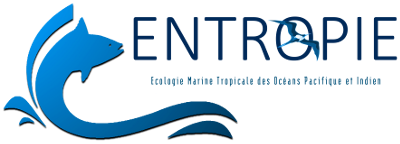Stable isotopes document inter- and intra-specific variation in feeding ecology of nine large southern Procellariiformes
Résumé
Investigating the foraging ecology of seabirds is especially challenging given their wide-ranging movements and the practical difficulties of obtaining unbiased information on their feeding behavior. Despite the development of animal-borne tracking devices, several limitations preclude investigations at the scale of a whole community in a given season or year, and, until recently, during the non-breeding period. Here we analyzed δ13C and δ15N in feathers of chicks and adults to investigate inter- and intra-specific variation in the foraging habitat and trophic position of 9 large procellariiform seabirds from 6 southern breeding localities during the breeding and non-breeding periods. Isotopic ratios of each species were generally consistent among different breeding populations, despite the large geographical scale and potential variation in oceano - graphy in surrounding waters. Both spatial and trophic segregation apparently allowed the coexistence of sympatric species in most breeding localities, except at South Georgia, where both δ13C and δ15N in chicks showed high overlap among species, probably resulting from the superabundance of alternative food resources during the summer. Low variance in stable isotope ratios among adults in several species indicated high overlap between individuals in feeding habits and trophic levels (i.e. isotopic specialist populations) during the non-breeding period. By contrast, large isotopic variances and the high within- and between-individual components of the trophic niche width suggested that grey-headed and light-mantled sooty albatrosses are generalists. Based on δ13C, the species that breed in the Southern Ocean can be categorized as residents or subtropical migrants, with the latter including oceanic and neritic subtropical migrants. Albatrosses meet the high energetic challenge of feather synthesis by foraging in different habitats, depending on the length of the non-breeding period. Annual breeders renew their plumage in productive neritic waters in ~4 mo, whereas biennially breeding species moult in less productive oceanic waters over much longer periods (~12 to 16 mo).
Fichier principal
 Stable_isotopes_document_ecology_southern_procellariiformes.pdf (726.67 Ko)
Télécharger le fichier
Stable_isotopes_document_ecology_southern_procellariiformes.pdf (726.67 Ko)
Télécharger le fichier
Origine : Fichiers éditeurs autorisés sur une archive ouverte
Loading...



